7 Destinations in the U.K. Where Locals Love to Travel
Do as the locals do, and visit these travel destinations in the U.K.
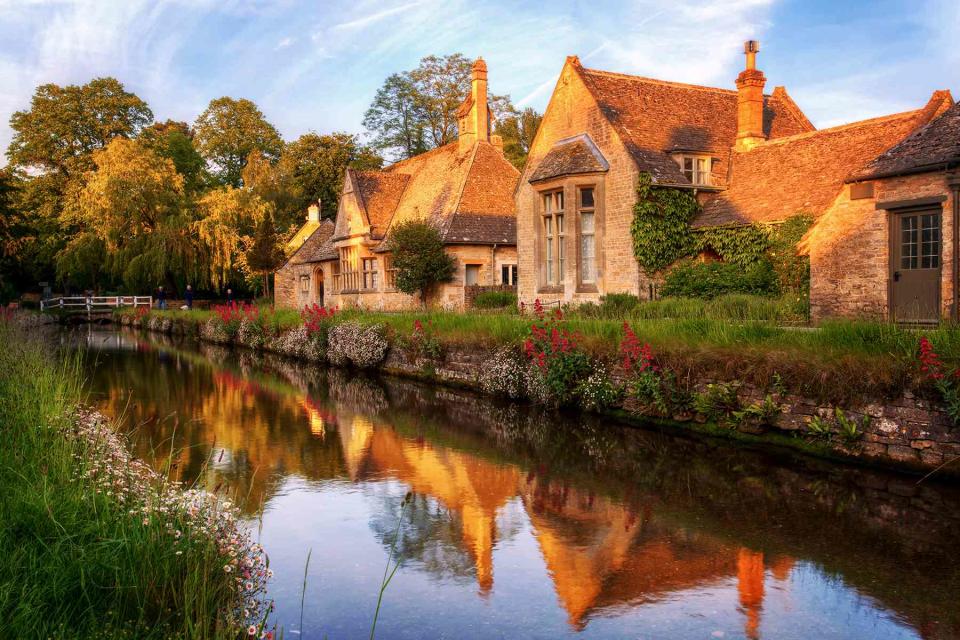
joe daniel price/Getty Images
The U.K. has incredible variety. From chocolate box villages and royal palaces to wild mountainous landscapes and some of the most gorgeous coastline in the world, it’s a wonder anyone who lives in England, Wales, Scotland, and Northern Ireland ever goes abroad.
Though we’re prone to escaping our famously unpredictable weather for the likes of Spain, Portugal, and Greece, when we Brits staycation, we’re increasingly spoiled for choice. A spa weekend in a 600-year-old country mansion? No problem. A house owned by King Charles? Easy. A long, multiday hike across a patchwork of fields and farms? Thanks to a unique "right to roam," you can go almost anywhere in the U.K. on your own steam. Trains will take you nearly everywhere, as will three-lane motorways. Huge RVs won't work well here (the roads are too narrow in the countryside), so try staying in a campervan, a traditional bed-and-breakfast, a boutique hotel with fine dining, or a pub with fish and chips.
Here are seven destinations in the U.K. that locals love to visit.
Cornwall, England
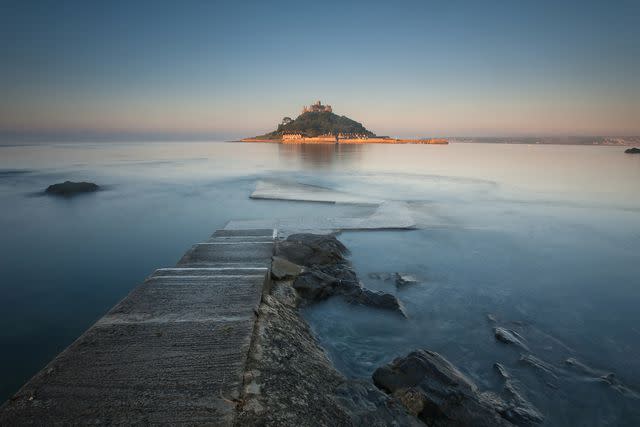
Tu xa Ha Noi/Getty Images
This county on the U.K.’s extreme southwest peninsula is where many Brits spend their summer vacation, but not only because it's the sunniest and warmest region. Although the bleak, windswept Bodmin Moor is beloved among hikers, most visitors head straight for the coast’s storybook fishing villages, including Padstow, Mevagissey, Polperro, and Mousehole (pronounced “muzzle”). There are actually two coastlines to choose from in Cornwall — one on the English Channel and the other on the Atlantic Ocean, which dramatically meet at Land’s End.
The best way to see Cornwall is by treading some of its South West Coast Path, on which you’ll discover rugged cliffs, sandy coves, and beaches that stretch for miles. Oh, and don’t forget the traditional Cornish pasty (a meat and potato pie) and Cornish cream tea, which includes a savory scone, strawberry jam, and thick clotted cream.
Lake District, England
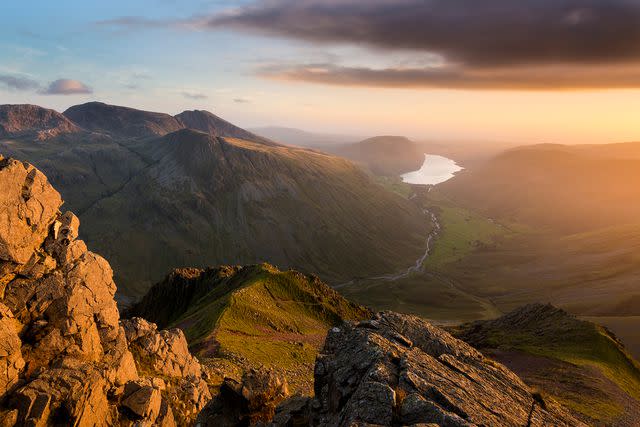
john finney photography/Getty Images
There are two types of Brits who head to the county of Cumbria in northwest England for some downtime: those after luxury and those wanting the complete opposite. For the former, there are dozens of grandiose English country manor houses and hotels such as Armathwaite Hall and Brimstone Hotel. Other visitors can explore the surrounding Lake District National Park, home to Scafell Pike, the tallest peak in England.
Many a Brit has visited the small market town of Keswick in search of a new waterproof jacket, but HQ of the U.K.’s outdoor clothing industry is also close to one of the region’s gems — the beautiful Castlerigg Stone Circle, which is as old as Stonehenge.
Cotswolds, England
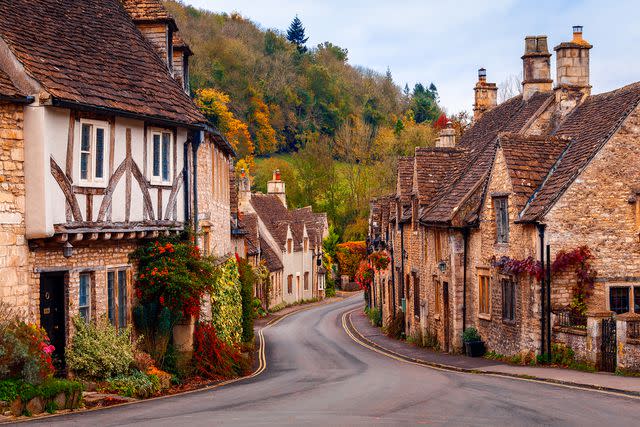
joe daniel price/Getty Images
A classic weekend getaway for a family get-together or couples after great food and country walks, the Cotswolds is a wealthy area that covers a huge swath of Oxfordshire, Warwickshire, Wiltshire, Worcestershire, and Gloucestershire (pronounce them correctly as Wu-stuh-sher and Glost-uh-sher and you’ll impress the locals). Definitely get yourself to Blenheim Palace, a country house in Oxfordshire and both the birthplace and ancestral home of Sir Winston Churchill. For a more typical example of a Cotswold village, it’s hard to beat Stow-on-the-Wold in Gloucestershire. Don’t miss The Old Stocks Inn and The Old Butchers for exquisite contemporary British fare (the latter is Michelin-starred, but very relaxed), and traditional English pubs The Porch House and The Queen's Head.
Brecon Beacons, Wales
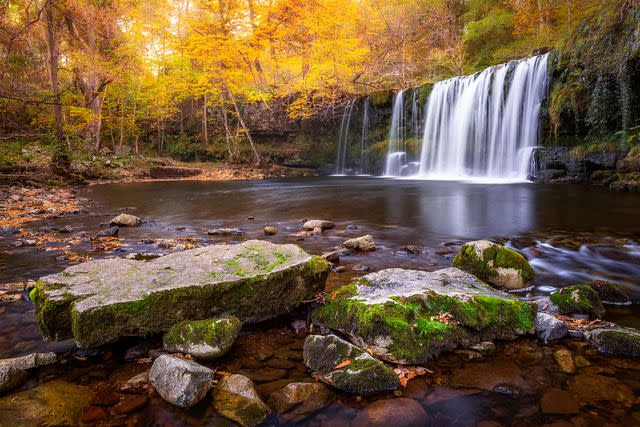
joe daniel price/Getty Images
Wales is not like England. The people are fewer, the beer is arguably better, and the wild areas are wilder. I may be biased (Wales is my home), but what’s certainly true is that Wales has the darkest skies in the U.K. The easiest International Dark Sky Reserve to visit is the Brecon Beacons National Park, located just north of the capital city Cardiff. It's also known for its barren peaks (a climb up Pen y Fan is a must), Waterfall Country, and the remote Llanthony Priory, which doubles as a unique hotel. The tiny village of Penderyn is home to a single malt whisky distillery and the perfect Welsh pub, the 12th-century Red Lion Inn, which also happens to be a Dark Sky Discovery Site. At the park’s western border is Castell Carreg Cennen and King Charles III’s home, Llwynywermod, while in the east lies the town of Abergavenny, a good base for fabulous walks, Michelin-starred restaurant The Walnut Tree, and the medieval Raglan Castle.
Liverpool, England
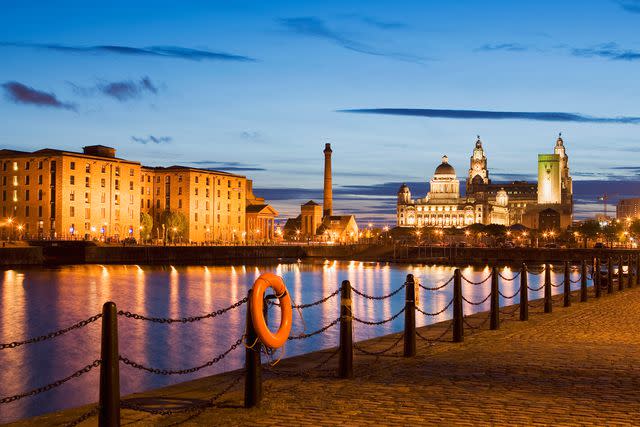
Atlantide Phototravel/Getty Images
It may have made the news last year after being stripped of its world heritage status by UNESCO, but the northwest maritime city and home of The Beatles remains a favorite among Brits for fun weekends away. Its historic Royal Albert Dock has been transformed into a busy area of bars and restaurants, while a few streets back, its grand Victorian buildings recall a time when Liverpool was a key player in the growth of the British Empire.
Nowadays, it's famous for its entertainment, with pubs and bars, music (including the iconic Eurovision Song Contest at the M&S Bank Arena in 2023), and Premier League football from Everton F.C. and Liverpool F.C. You can’t skip The Cavern Club (birthplace of The Beatles) and Cains Brewery Village, an old brewery that was converted into a pop-up center for street food, craft breweries, and entrepreneurs. If you want to explore football at its best, go see Everton F.C. play in front of its passionate fans in a unique, 1930s-style stadium.
Pembrokeshire, Wales
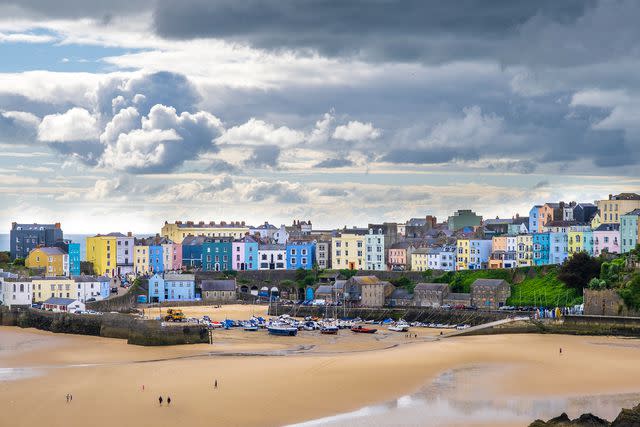
HarrisDro/Getty Images
The U.K. might not be known for its wildlife-watching, but Pembrokeshire in southwest Wales has more than its fair share of seabirds. On Skomer Island, it’s the huge colony of Atlantic puffins that are the chief attraction between April and July. Elsewhere off the Pembrokeshire Coast National Park, there are dolphins and seals to see from its remote beaches and coves. If you’d rather explore castle, Pembrokeshire’s Carew, Llawhaden, and Manorbier castles are little-known and dramatically different. However, if you simply want to relax at a place by the sea, head to Tenby. Frequented by many Welsh vacationers each spring and summer, this harbor town has four beaches and 13th-century walls containing many hotels, pubs, and stores. And if you prefer something quieter, try the geodome yurts at Beavers Retreat Glamping near Manorbier. It’s Wales at its quirky best.
Isle of Skye, Scotland
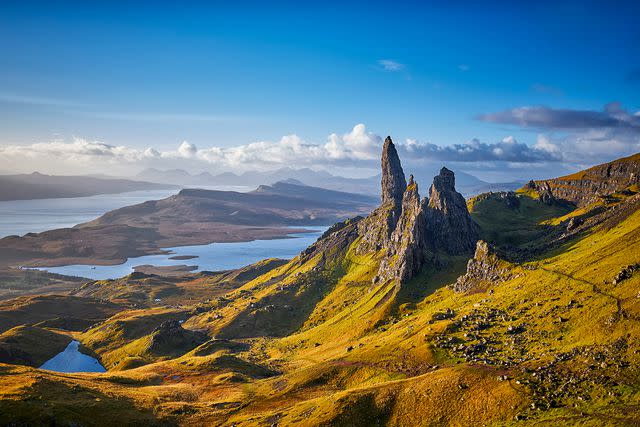
1111IESPDJ/Getty Images
The Old Man of Storr on the Trotternish peninsula is what draws visitors from across the U.K. to the Isle of Skye in the Inner Hebrides of northwest Scotland. However, this rugged region of lochs, waterfalls, and castles is a playground for outdoorsy types and photographers alike. Connected to the mainland by a bridge, Skye is home to Armadale and Dunvegan castles, Kilt Rock waterfall, and the dinosaur footprints on An Corran Beach. There are two distilleries — Talisker and Torabhaig — but in addition to moonshine, it’s also known for its darkness. Up here at 57º North latitude, it’s often possible to glimpse the aurora borealis. Great places to immerse yourself in Skye lore include Kinloch Lodge Hotel & Restaurant, a 16th-century hunting lodge, The Three Chimneys on Loch Dunvegan, and Mint Croft luxury cottages.
For more Travel & Leisure news, make sure to sign up for our newsletter!
Read the original article on Travel & Leisure.

